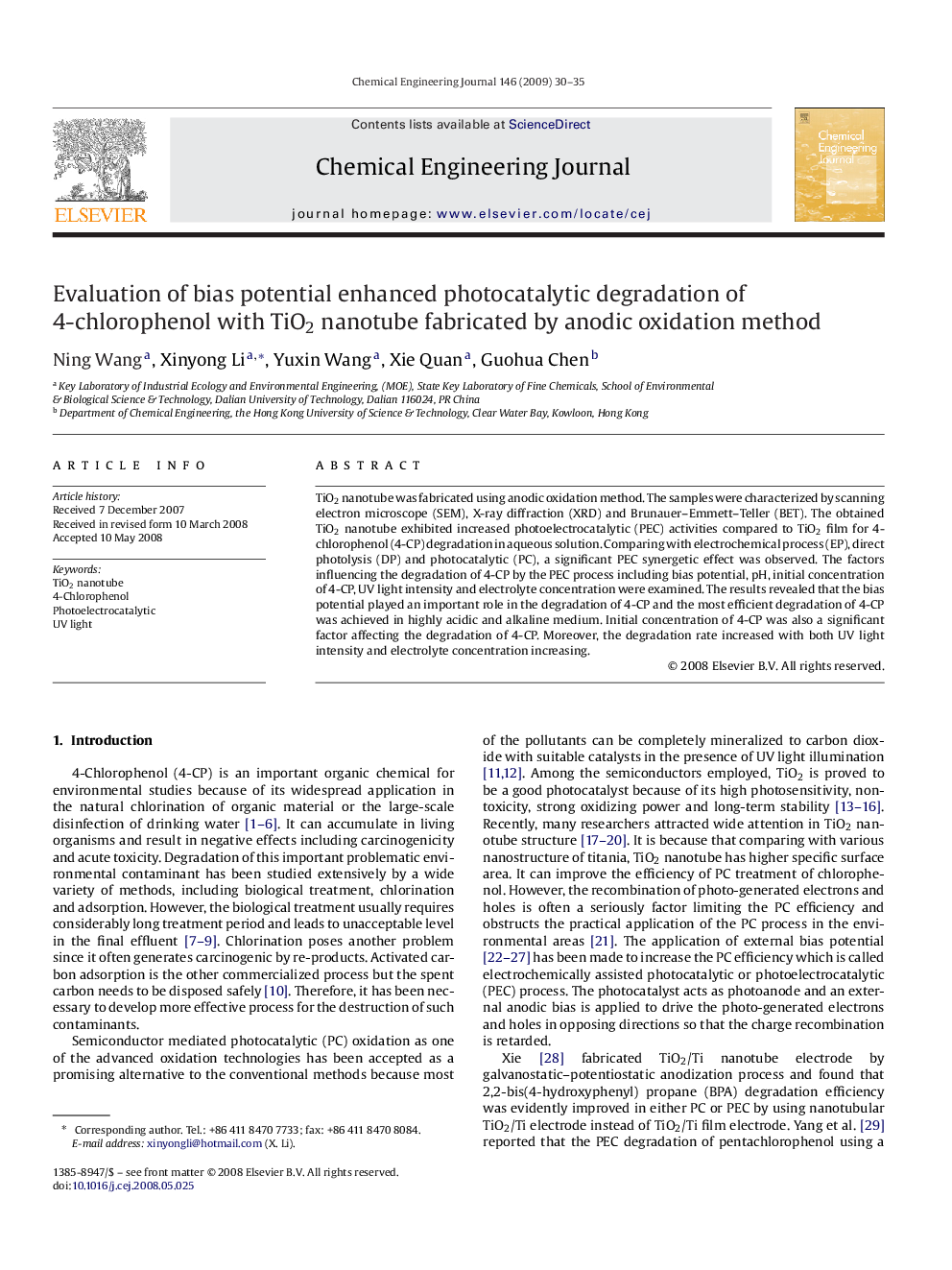| Article ID | Journal | Published Year | Pages | File Type |
|---|---|---|---|---|
| 152636 | Chemical Engineering Journal | 2009 | 6 Pages |
TiO2 nanotube was fabricated using anodic oxidation method. The samples were characterized by scanning electron microscope (SEM), X-ray diffraction (XRD) and Brunauer–Emmett–Teller (BET). The obtained TiO2 nanotube exhibited increased photoelectrocatalytic (PEC) activities compared to TiO2 film for 4-chlorophenol (4-CP) degradation in aqueous solution. Comparing with electrochemical process (EP), direct photolysis (DP) and photocatalytic (PC), a significant PEC synergetic effect was observed. The factors influencing the degradation of 4-CP by the PEC process including bias potential, pH, initial concentration of 4-CP, UV light intensity and electrolyte concentration were examined. The results revealed that the bias potential played an important role in the degradation of 4-CP and the most efficient degradation of 4-CP was achieved in highly acidic and alkaline medium. Initial concentration of 4-CP was also a significant factor affecting the degradation of 4-CP. Moreover, the degradation rate increased with both UV light intensity and electrolyte concentration increasing.
